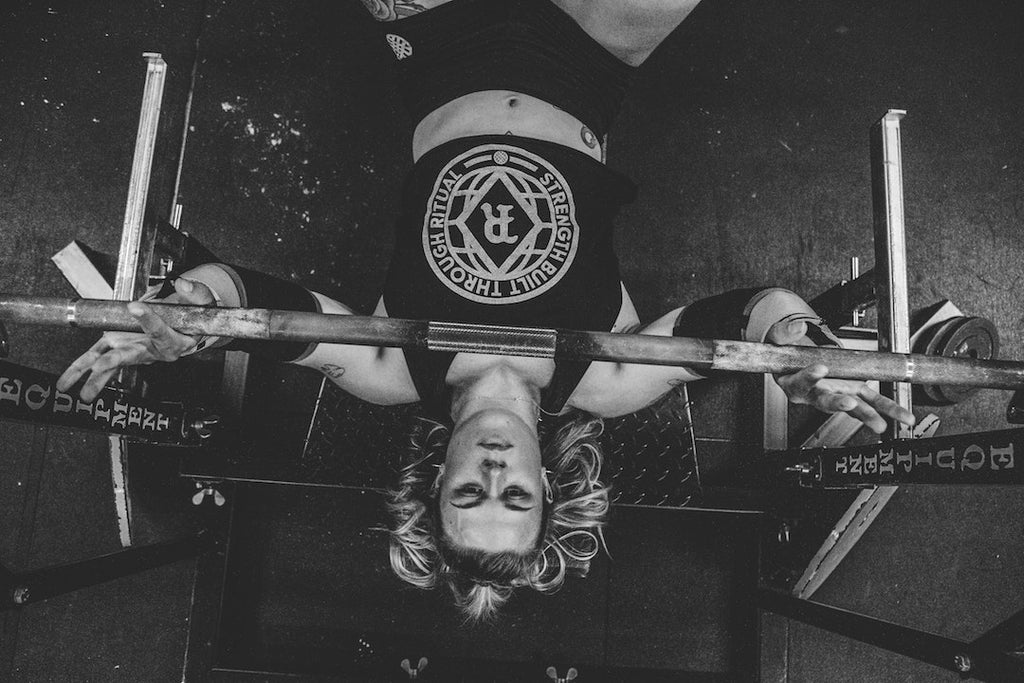Where does your mind wander to while you’re in the gym? You’re likely planning your post-workout snack, thinking about work, losing imaginary arguments, or just getting lost in your playlist.
The mind likes to wander, and this can be great if it helps to make your workouts feel less taxing. But if you’re not seeing the results you want, staying present and focused could be what you are missing.
Whatever your goals in the gym, you’ll know that it isn’t a single thing that will help you get there; it’s a delicate balancing act. You need to think about nutrition, training with a plan, prioritising rest, staying hydrated, focusing on your form while also remaining consistent in your efforts, to name but a few components. And let’s not forget, your mindset also matters.

Mindfulness might not seem like it has a place in the gym, but it could be the missing link between where you are and where you want to be. When we think about mindfulness and meditation, we think of it as a passive activity.
But there is growing evidence to suggest that adopting a mindful mindset in the gym could help to improve injury-proof your workout and help you lift heavier. Let’s explore in more detail…
What is mindfulness?
Mindfulness and meditation are not the same. Meditation is all about clearing the mind, while mindfulness is an acceptance and awareness of what is swirling around up there. And both could be beneficial in the gym.
You’ve likely heard of the mind-muscle connection. It’s a state of awareness of your body that allows you to move with intention. And by actively engaging specific muscles, you’ll see better results in the long term. Mind muscle connection could also be considered a kind of mindfulness.
Proper breathing technique is also essential for any workout. If you find yourself holding your breath between reps, you could be killing your progress by not giving your muscles the oxygen they need at the right time.
How do you practice mindfulness in the gym?
Mindfulness is an awareness of the present. This means scanning down your body and being aware of everything. From the way your body makes contact with the ground, the way you grip the barbell, and the way you move your body.
When you look in the mirror to check your form, this is a kind of mindfulness in practice, but there are ways you can take this even further. One of the best ways to practice mindfulness is by resetting between reps.
Notice how every movement is slightly different and how you feel it in different places. Your first rep will feel very different to the last rep in your last set, for example. Being aware of these differences can help you to tune into what your body is telling you.
A simple way to increase your awareness is to try a “body scan”. You can do this anywhere at any time, and it’s helpful to practise this regularly throughout the day. Start with your head and work down your body, first paying attention to your shoulders, arms, fingers, core, hips, legs and down to your feet. Notice any areas where you are carrying tension and try to actively let this go.
Mindfulness is not something that you automatically know how to do. It’s something that you train, like any other muscle or movement. The more you do it, the easier it will become.
What are the benefits of mindfulness in the gym?
Most gym-goers are proficient at shutting out the world, assuming this means they’ve found focus. But shutting out your immediate surroundings is only one part of the struggle. You also need to check in with yourself and be aware of your movement and breathing. Here are just some of the benefits of increasing mindfulness when you lift.
Prevent injury
When you bring mindfulness into the gym environment, you learn to shut out the world and focus on the self. But this focus isn’t always on the right things. By focussing on your form and learning to listen to what your body is telling you, you’ll be able to reduce the risk of injury.
Injury often happens when we aren’t paying attention. When we aren’t paying attention, our form suffers, and we can rely heavily on the wrong muscles, which puts strain where it shouldn’t be. When you’re in the moment and actively scanning your body to look for signs that something isn’t right, you’re far less likely to get injured.
Increase awareness
Increased awareness also means better form. And focusing on your form is one of the best ways to increase weight safely. You’ll also learn to isolate the right muscles to make sure your workouts are as effective as possible. This is called mind-muscle connection, and it’s something that will transform your training.
Increased awareness comes with practice and learning to move with intention. When you move with intention, you can develop muscle memory to make it easier to move more weight.
Fight stress
It’s no secret that mindfulness is excellent for combatting stress. If you’re already using the gym as a form of therapy, then adding meditation into the mix can only help improve the results.
Meditation helps you to separate thoughts from feelings, so you soon learn to diffuse the thoughts before they manifest as physical feelings. So, the next time you get angry or upset over something pointless at work, you’ll be able to take a step back and identify that thoughts don’t have to turn into physical feelings.
Improve breathing
If you’re guilty of holding your breath between reps, you’ll benefit from increasing awareness of your breath. Meditation work starts and ends with awareness of how you inhale and exhale.
Breathing helps to improve control and provides muscular endurance. So if you struggle to time your breath when you lift, then a little more mindfulness about your breathing could help.



